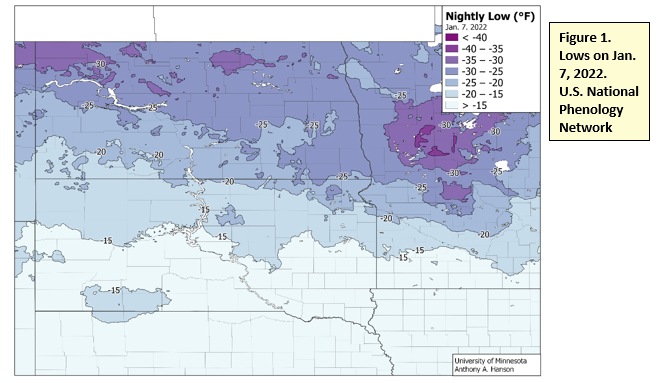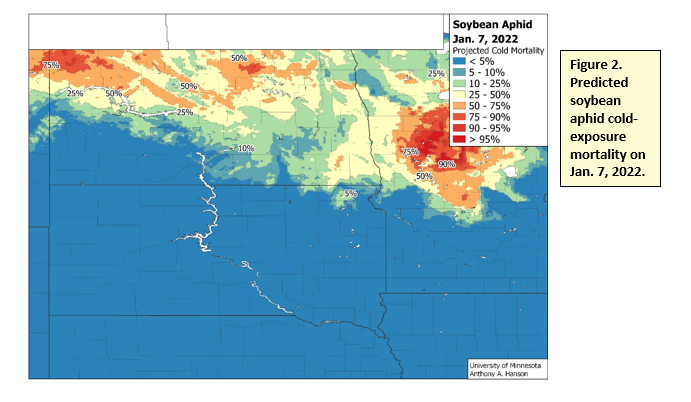Soybean Aphid - Overwintering Mortality
This page was adapted from the article, "Soybean Aphid - Overwintering Mortality" which appeared in Crop & Pest Report on May 12, 2022.
Soybean aphids overwinter as eggs on the buds of buckthorn (Rhamnus spp.) in shelterbelt area close to fields, and are sensitive to air temperatures and not wind chills. Research has shown that eggs will freeze to death at temperatures between -25 to -35⁰F. In North Dakota, lows below -25⁰F were observed on January 7, 2022, mainly in the northern half and Red River Valley areas (Fig. 1). For soybean aphid eggs, a few areas in northern North Dakota had >50% projected cold mortality (see orange to red on Fig. 2). However, most of the Red River Valley where soybean aphid is most common had 25-50% projected cold mortality (yellow on Fig. 2) to 10-25% projected cold mortality (light green on Fig. 2). Soybean aphid is uncommon west of the Missouri River where projected cold mortality was <5%.
While super cold winter temperatures can sometimes help reduce insect pest populations, it usually is not 100% effective. Overall, soybean aphid eggs are very winter hardy and can survive extended periods of very cold temperatures. Soybean aphids have two other biological factors that favor their survival – reproduction rate and mobility. In the summer, soybean aphids reproduce asexually (or parthenogenic) on soybean, meaning that females give birth to live young without mating and all young are female. These young females are able to reproduce within seven days or less, resulting in rapid population increases when environmental conditions are right. Soybean aphids also are mobile and can migrate in large numbers into North Dakota from the southern states like southern Minnesota, Iowa, and South Dakota. Regular routine scouting is always important regardless of the projected overwintering mortality.
Thanks to Dr. Anthony Hanson, University of Minnesota’s Extension Educator, at Morris WCROC, for the maps. For the Minnesota forecast on overwintering soybean aphid survival, please read Dr. Hanson’ article:
https://wcroc.cfans.umn.edu/about-us/wcroc-news/cold-winter-soybean-aphid


